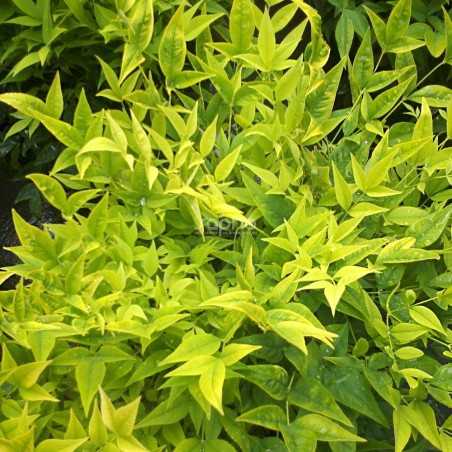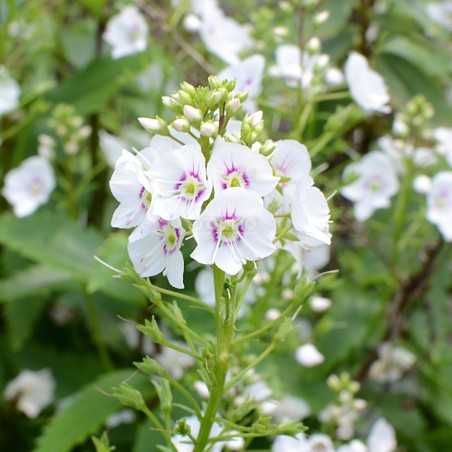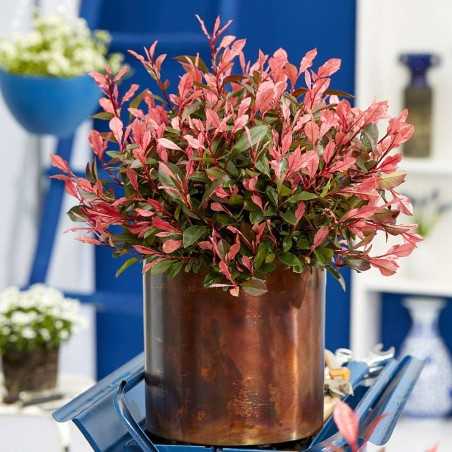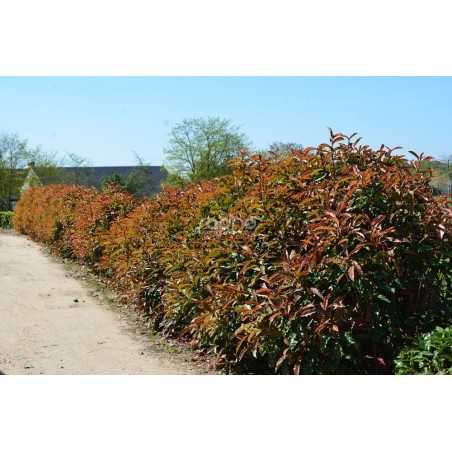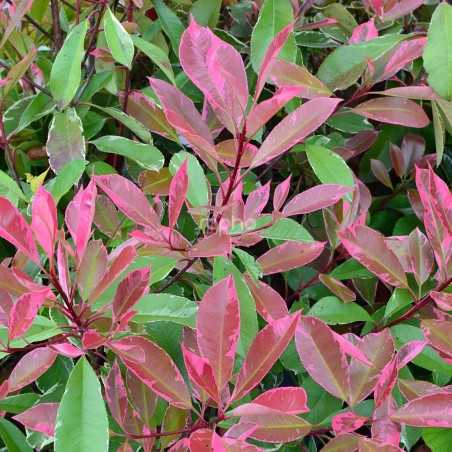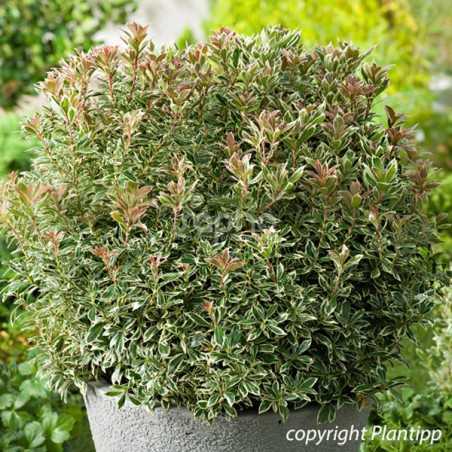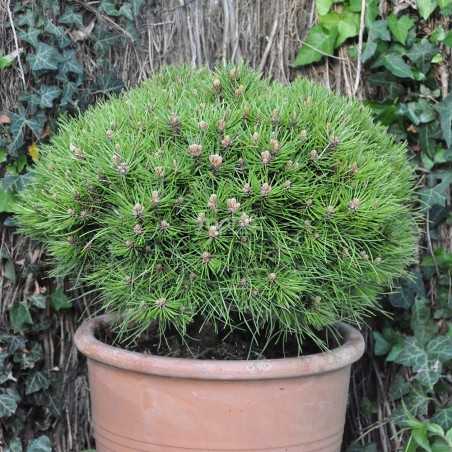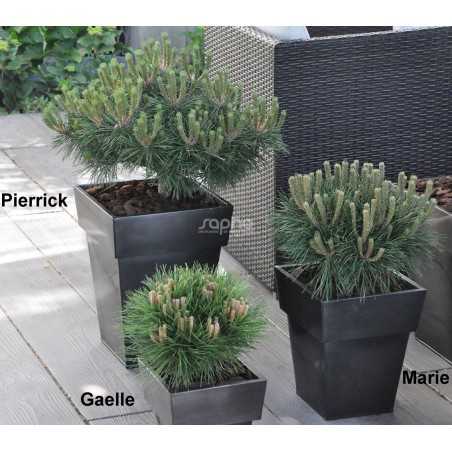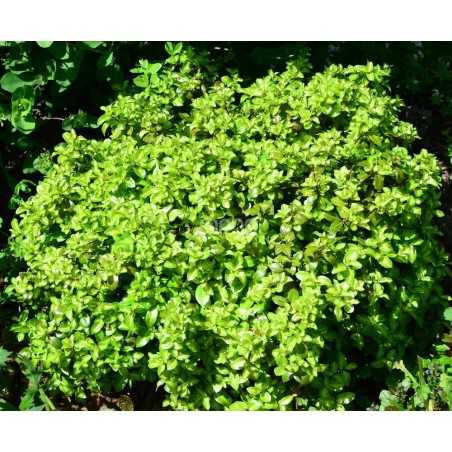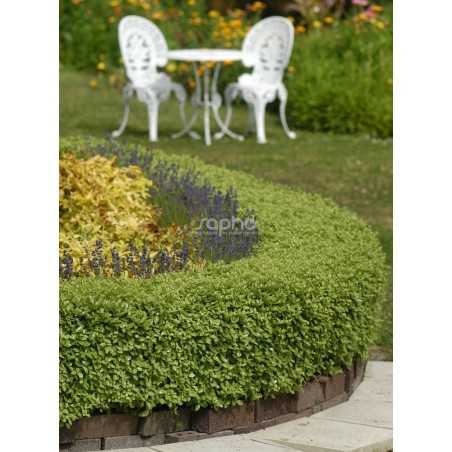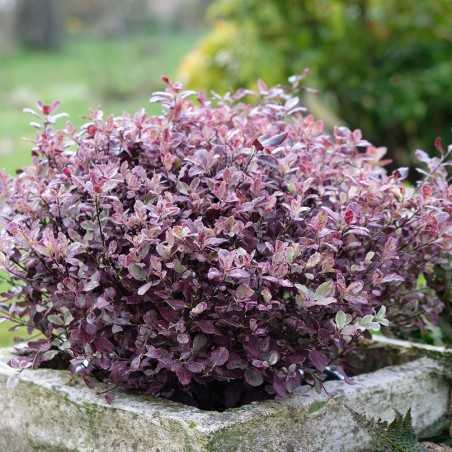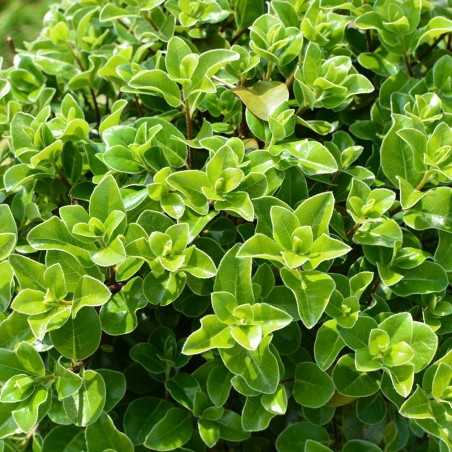In springtime its chartreuse coloured leaves are very attractiveA Nandina with a brand-new colour! The new shoots are yellow-green, chartreuse or also lime green and very bright. In full sun the outer leaves keep their chartreuse colour, whereas the inner leaves turn light green.Its shape is very interesting, forming a bushy and branched little shrub of under 1 m, like a ball.It never flowers, or very seldom.Recommended to illuminate the darker parts of the garden in the spring, it also accepts to be grown in pots.Trophies: Gold medal at PLANTARIUM 2014 (Boskoop - NETHERLANDS)Honored with a Retailer's Choice Award™ at SNA 2014
Filter By
Foliage
Position
Categories
Menu
All our varieties
A deep foliage, abundant and delicate white flowers all summer longOriginating in New Zealand, this evergreen selection is hardy down to -12° C.It's leathery, regularly toothed leaves are first tender green, changing afterwards to a pretty dark green. The young stems are purple-brown.'Avalanche' is very floriferous from June to September. It covers itself in a cloud of simple, small white flowers with a purple center, standing out well on the foliage.Its long summer flowering, a quick growth and bushy shape make this variety an ideal plant for small spaces and pots.
A tiny Photinia full of energy! Made for balconies or low hedges
This variety of photinia is particularly compact and dense-growing, with sturdy stems.
Its dark green foliage contrasts with the bright pink young shoots.
An easy-care plant, it bears pruning well and branches well.
Perfect for pots, balconies or low hedges.
Chocolate coloured and toothed leaves : an original foliage with this new Photinia.The originality of the foliage brings a revival to the Photinia. The leaf blade is ondulated and finely toothed. The young shoots, copper at first, take on the unusual chocolate shade, and then turn dark green.This cultivation, tested in nurseries for several years, performs well: it branches and develops well in containers, its growth is good. Hardy, CRUNCHY® keeps its leaves in winter and has a good resistance to powdery mildew. It is therefore recommended for hedges, with or without clipping.Trophies: FIRST PRICE at FLORMAT - MIFLOR 2014 (Padova - ITALY)
Beautifully mixed colours and an upright and regular formIts variegated foliage brings colour throughout the year. Photinia Louise has also been selected for its vigorous, erect growth and its ample vegetation that's regular, compact and dense. Photinia Louise is a shrub with persistent leaves and changing colours. In spring and autumn the young shoots are bright red spotted with pink.The developing leaves become thick and green, spotted wih creamy white. Its flowers, in May, are quite discreet, forming creamy white umbels. Upkeep is easy as it needs little pruning other than that required by the garden. In a hedge, a mixed bed or as a solitary shrub, 2 to 3 m high, Photinia Louise will enliven a garden throughout the year.
A tiny Pieris with finely elegant foliage'Little Frosty' is a tiny Pieris with finely elegant foliage that is green with white borders and subtle tints of pink on the young spring shoots. Its limited growth forms a compact tuft 40 cms high and 25 cms wide. It retains an ample vegetation. Pieris "Little Frosty" is ideal for small spaces, terraces and patios, tubs and garden edges.In spring, bunches of bright, white bell-shaped flowers appear, creating an attractively coloured ensemble with its dappled leaves. 'Little Frosty' is equally resistant to disease and frost. It likes cool, well-drained soils, rich in humus.
A beautiful regular ball of 0,80 m high (fully grown).
Growth rate is 5 - 9 cm per year, slower than 'Pierrick Bregeon'.
Forms a compact dense mound.
Light green needles of up to 10 cm, can naturally and slightly turn yellow in winter. Spiraling needles at maturity. Viability of the needles: 3 to 4 years.
Small grey buds with a pointy tip
No resin production.
Like all the other varieties of the pine range, registered by H. BREGEON, its reduced growth allows this pine to be grown in pots, on terraces and on balconies, as well as in small modern gardens.
Bambino®, the smallest of the range.
The smallest variety (0.50 m fully grown) and of slowest growth rate.
The dark green needles stay on for 2 to 3 years.
Pointed buds.
Very slight resin production.
Like all the other varieties of the pine range, registered by H. BREGEON, its reduced growth allows this pine to be grown in pots, on terraces and on balconies, as well as in small modern gardens.
A golden ball for low hedges or in isolationThe variety 'Golden Ball' has very brilliant golden foliage. In its period of growth, its young golden-yellow leaves contrast with the older yellow-green leaves edged with a stronger green.Coming from the same breeding than Pittosporum tenuifolium 'Golf Ball', 'Golden Ball' has the same qualities: very dense, it naturally forms a ball of less than one meter. Fast-growing and branching from the base, it can be pruned. 'Golden Ball' is ideal for small spaces and low hedges as well as in pots and for topiary.As it is resistant to drought, wind and seaspray, it provides an alternative to box in temperate and Mediterranean areas. In May and June its small discreet violet-coloured flowers smell of honey.
Recommended for its low, naturally ball shaped growthThis cultivar originates from New Zealand.?Golf Ball? has a very round shape, not more than 1 m in dimension. It grows rapidly and stands out by its dense branches from the base upwards.Its evergreen foliage is light green.Discrete violet-brown flowers appear in Mai and June. The have a scent of honey but are of no decorative interest. 'Golf Ball' resists rather well to drought, and to temperatures of -5 to -10° C. It is excellent for the sea side because it accepts mist and wind.Recommended for small areas and low hedges, it is also suitable for pots and as topiary, like box.
Fantastic foliage in perpetual evolution
The Bannow Bay variety is a natural mutation of the Pittosporum Tom Thumb.
Its very dense foliage has evolving colors: olive green edged with white in spring, then splashed with pink and finishing in a beautiful shade of purple when the cold arrives.
Its natural, round clump growth requires little or no pruning.
This shrub adapts perfectly to mild climates, in the garden or in pots on a balcony or terrace.
Dense and upright, ideal for hedges and topiaries
Irish Luck pittosporum is a dense-growing variety with strong branches and magnificent glossy green foliage contrasting with its dark stems.
Steady-growing, resistant to pests, salt and cold, it is very easy to care for.
It is ideal for planting in the ground, as a hedge, topiary or pot on a terrace or balcony.

